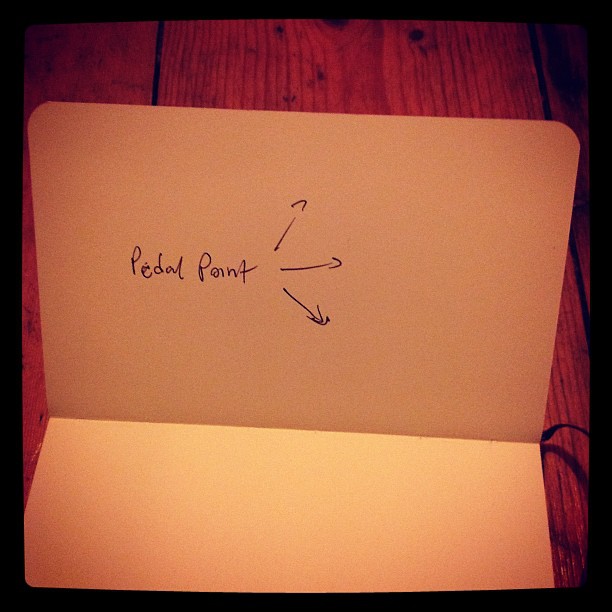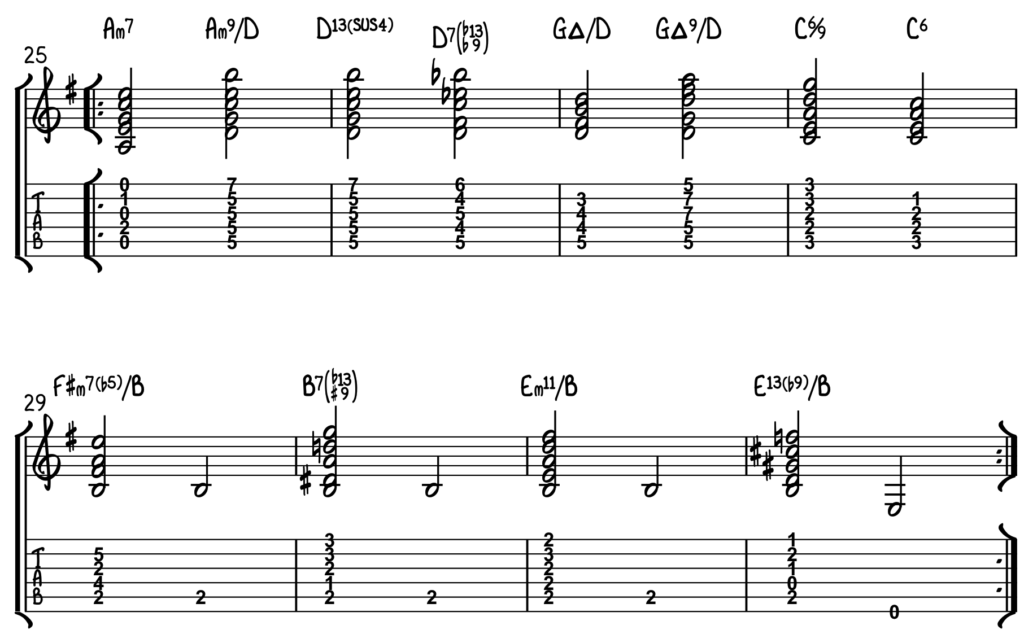
A pedal point is a simple harmonic device which can add tension to your chord progressions and arrangements. Here are four examples:
You can feature the pedal in the top, in the middle, or at the bottom of the chords.
Let’s say you’re playing this sequence:
A-7 D7 G∆ C∆ F#-7b5 B7 E-7 E7
Top Pedal Point
Try putting a B on top of all those chords like this:

Middle Pedal Point
Next, try adding the B in the middle of all those chords.
To reveal that inner pedal point you’ll want to play the B first, then the chord. And then repeat that for all the chords.

Lower Pedal Point #1
For the lower pedal point you could play all those chords over an E bass note.
You’ll want to hear all the chords as aiming for the E minor chord. That’s your aural target.
You can also think of this as like an extended suspension. [Check out this post for how you might apply this suspension idea to a solo]

Lower Pedal Point #2
Or you could try a D pedal for the first four chords, and then a B pedal for the last four.
This is a common thing to do. You’re taking the bass note of the dominant 7th chord and using it under all the chords in that cadence.
So Am7 D7 G∆ becomes Am7/D D7 G∆/D.
For the C∆ you can either include that with the pedal – C∆/D, or you could just play C∆ and use it to connect to the next bit where the pedal note is a B. The pedal then goes down: D C B

So see if you can use these ideas to add tension to your chord progressions and arrangements.
Remember, you could also just play your normal voicings and have the bass player provide the pedal point.
Do you have any favourite tunes that use pedals?
Add your recommendations in the comments below
Speak soon,
Mike
Ah yes! Fab tune!
Dolphin Dance for me. Pedal-tastic.